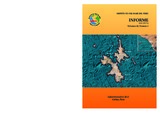Por favor, use este identificador para citar o enlazar este ítem:
https://hdl.handle.net/20.500.12958/2984| Título : | Evaluación ambiental en la zona marino costera de Lambayeque – Perú, 2010. |
| Otros títulos : | Environmental assessment in the marine coastal area from Lambayeque – Perú, 2010 |
| Autor : | Bances, Sergio Castañeda Condori, Javier |
| Palabras clave : | Evaluación Ambiental;Zona Marino Costera;Lambayeque;Calidad Ambiental |
| Fecha de publicación : | 2015 |
| Editorial : | Callao |
| Citación : | Inf Inst Mar Perú 42(3), 2015. p. 328-338 |
| Citación : | Informe IMARPE;Vol. 42, N° 3, 2015 |
| Resumen : | Se realizaron 2 evaluaciones, en agosto y noviembre-diciembre 2010, entre
la desembocadura del Dren 1000 (Bodegones) y la del río Zaña. En el intermareal se registró la mayor temperatura superficial del mar, se registró anomalías de hasta +8,1°C (desembocadura del Dren 1000). En agosto en el submareal, la temperatura promedio fue 16,3 °C; en noviembre-diciembre fue 15,9 °C. Similar tendencia en superficie y fondo se observó en el oxígeno disuelto. Mayor cantidad de sólidos suspendidos
totales (SST) se registró alrededor de la desembocadura del Dren 4000 (137,93 mg/L), sobrepasando los límites permisibles para aguas de CEMC y AMC. Aceites y grasas fluctuaron entre 0 y 0,3 mg/L encontrándose dentro de los límites permisibles de CEMC y AMC. En el submareal, los Coliformes Totales (CT) y coliformes
Termotolerantes (CTT) cumplieron con la Ley General de Aguas para la clase V y VI; en el intermareal la demanda bioquímica de oxigeno (DBO5) en la desembocadura del Dren 3100, sobrepasó los límites permisibles de calidad de agua. En agosto se registraron 39 especies en el bentos, en noviembre y diciembre fueron 27
especies. Los índices de diversidad de Shannon Wiener y riqueza de especies del macrobentos submareal,
se incrementaron de norte a sur, debido al predominio del sustrato fango-arenoso. Los puntos de alteración
ambiental fueron las desembocaduras de los drenes 1000, 3100 y 4000, que reciben aguas servidas y desechos orgánicos e industriales de los centros poblados de Lambayeque, Pimentel y Santa Rosa, respectivamente. ABSTRAC: Between August and November-December 2010, 2 evaluations were made, between the mouth of the drain 1000 (Bodegones) and Zaña river. In the intertidal zone as the sea surface temperature anomalies up to + 8.1 °C (mouth of the drain 1000) was recorded. In August in the subtidal, the average temperature was 16.3 °C; in November-December was 15.9 °C. Similar trend was observed bottom surface and the dissolved oxygen. Greater amount of total suspended solids (TSS) was recorded around the mouth of the drain 4000 (137.93 mg/L), exceeding the allowable limits for water CEMC and AMC. Oils and fats varied between 0 and 0.3 mg/L being within the permissible limits of CEMC and AMC. In the subtidal, total coliforms (CT) and thermotolerant coliforms (CTT) met with the General Water Law for class V and VI; in the intertidal biochemical oxygen demand (BOD5) in the mouth of the drain 3100, exceeded the permissible limits of water quality. August 39 species were recorded in the benthos, in November and December were 27 species. The indices of Shannon Wiener diversity and species richness of macrobenthic subtidal, increased from north to south, due to the predominance of mud-sand substrate. Environmental alteration points were the mouths of drains 1000, 3100 and 4000, receiving sewage and organic and industrial waste the towns of Lambayeque, Pimentel and Santa Rosa, respectively. |
| Descripción : | Informe IMARPE;Vol. 42, N° 3, 2015, p.328-338 |
| URI : | https://hdl.handle.net/20.500.12958/2984 |
| Aparece en las colecciones: | Informe vol. 42(3) 2015 |
Ficheros en este ítem:
| Fichero | Descripción | Tamaño | Formato | |
|---|---|---|---|---|
| INFORME 42( 3)-6.pdf | 21,2 MB | Adobe PDF |  Visualizar/Abrir |
Este ítem está sujeto a una licencia Creative Commons Licencia Creative Commons

